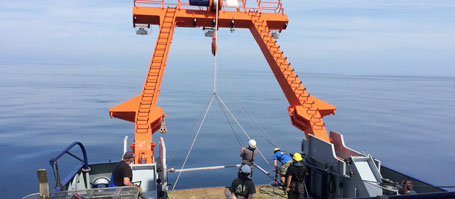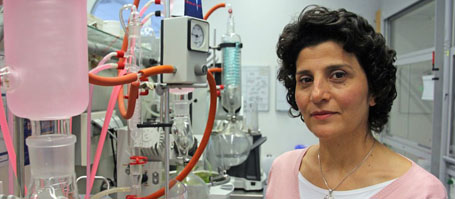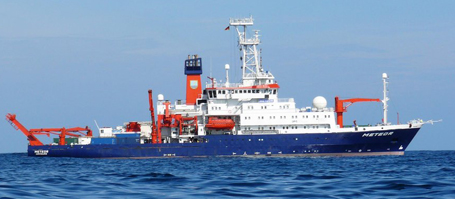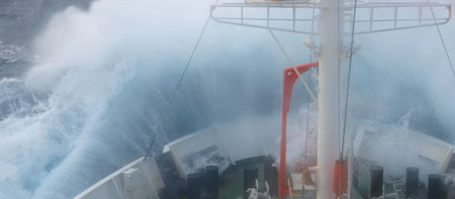Scientists from GEOMAR Helmholtz Centre for Ocean Research Kiel have now presented a new system in Florida which can detect former hydrothermal systems, even under thick sediment layers.
In 1979, a human being saw with their own eyes volcanic pipes on the sea floor of the Pacific from which hot black-colored water was pouring for the first time. Since then these so-called “black smokers”, which have, by now, been found at all mid-ocean ridges, have preoccupied science. There are several reasons for this. Fascinating ecosystems form around the structures which could contain information about the origin of life on our planet. Apart from that, the systems – which are designated technically as hydrothermal vents – can provide information about processes deep beneath the sea floor. They are also considered as a potential source of raw materials. The water which escapes from the sea floor contains dissolved metals which settle on the sea floor and form the characteristic volcanic pipes of a black smoker. The minerals which are thus created contain high concentrations of zinc, copper and gold, among other things.
But even after forty years of research many questions remain unanswered. Scientists from GEOMAR Helmholtz Centre for Ocean Research Kiel have now presented a technology at the international Underwater Mining Conference in St.Petersburg, Florida (USA) which could help to clarify some of these questions.
The fundamental problem of hydrothermal systems is that they are only active for a few centuries. Afterwards, the sediment layers become thicker and cover the former sources and their deposits. Moreover, plate tectonics transport them away from their original location. “Since until now in our search for hydrothermal systems we have relied solely on temperature anomalies and the chemical signatures of the escaping water, we have only found the active ones”, geologist Dr. Sven Petersen from GEOMAR explains. “We are not able to recognize old, extinguished systems, which are covered in thick sediment layers”.
It would be important to know the number and location of these systems on the sea floor and to get to know more about how they work in order to be able to judge whether mining black smokers for raw materials would be worth the trouble and cost. Therefore, in the framework of the EU program “Blue Mining”, technicians and scientists at GEOMAR have developed a coil system which can also be deployed at depths thousands of meters below the surface. “This is practically a big metal detector, with which you can detect conductivity anomalies connected to ore bodies under the sub-seafloor. The system also provides information about how deep the ore body is buried and how thick it is.” Dr. Sebastian Hölz from GEOMAR explains.
The system, which has been given the name MARTEMIS (Marine Transient Electromagnetic Induction System), has already passed the first acid test. In April and May this year, the scientists involved tested it at the Palinuro volcanic complex in the western Mediterranean. There, on earlier tours, an inactive hydrothermal system covered in sediment was rather coincidentally detected and later retrieved by GEOMAR scientists. “For this reason, the area is suitable for testing how MARTEMIS works. The data which we have now evaluated are in line with the assumption that the ore body covered in sediment is much bigger than we thought until now.” says Dr. Hölz.
The researchers presented these new data and demonstrated the system at the Underwater Mining Conference. “The reactions have been very positive.” sums up Dr. Hölz. “We had a lot of demand from the other participants.“ In the next few years, MARTEMIS will be deployed on hydrothermal systems in the Atlantic together with other newly developed exploration techniques. We hope that we will then be able to significantly expand our knowledge about how they function.” says Dr. Petersen.
Links:
www.geomar.de GEOMAR Helmholtz Centre for Ocean Research Kiel
www.bluemining.eu The Blue Mining project
Image material:
Image material is available for downloaded at www.geomar.de/n4093.
Contact:
Jan Steffen (GEOMAR, Communication & Media), Phone: +49 431 600-2811, presse@geomar.de
…



